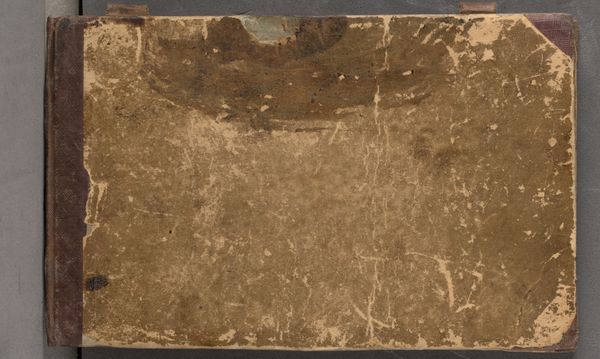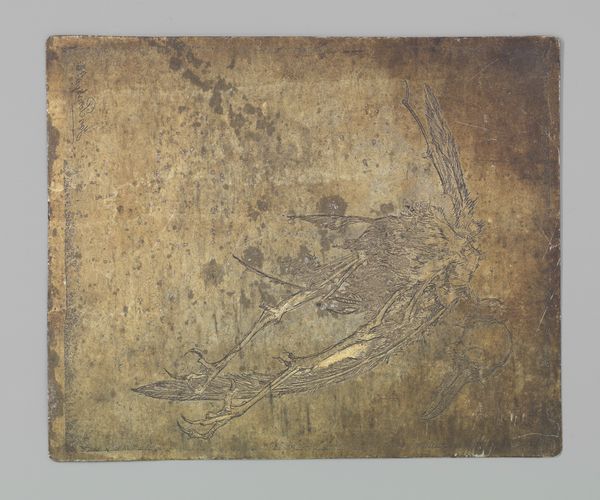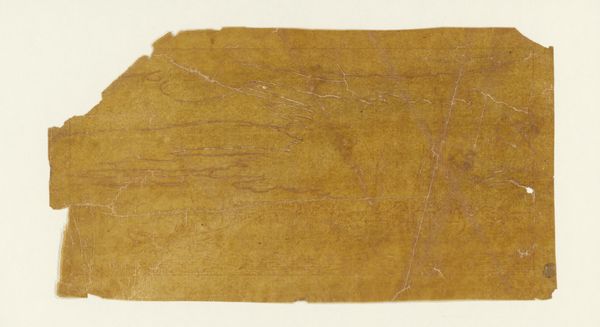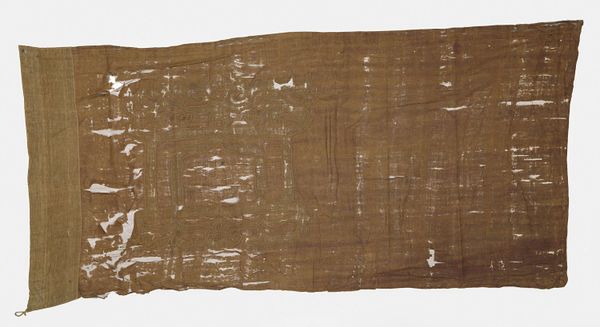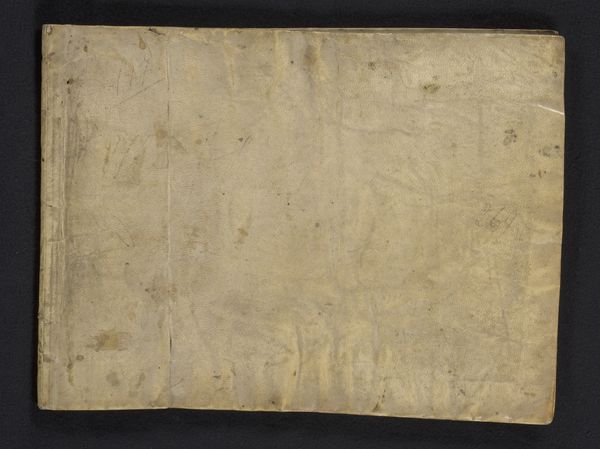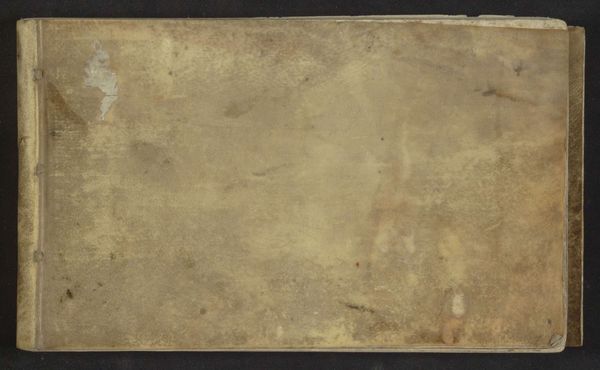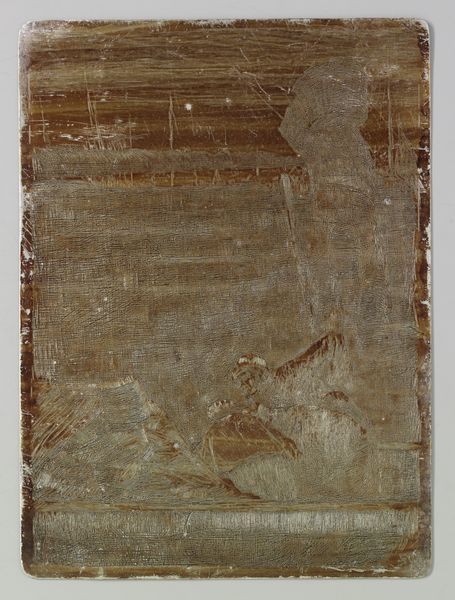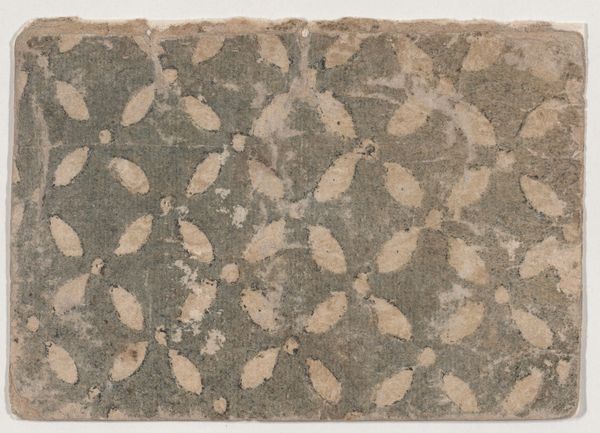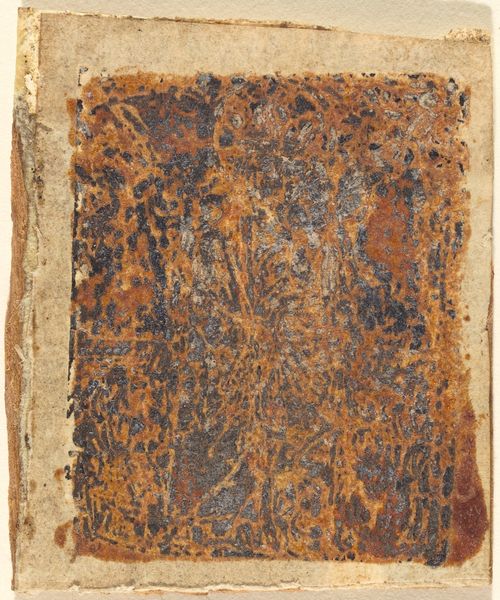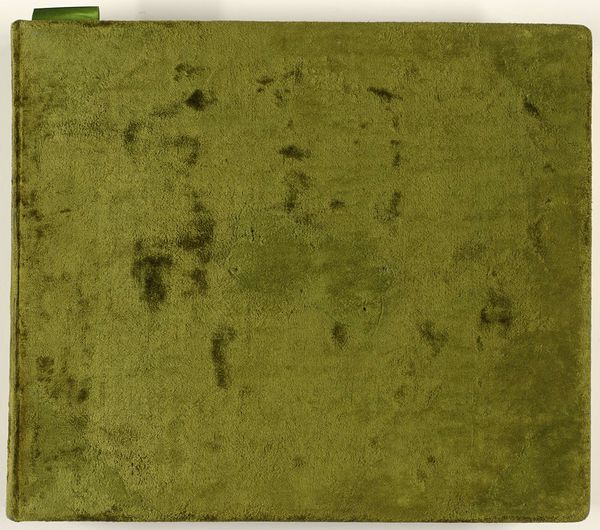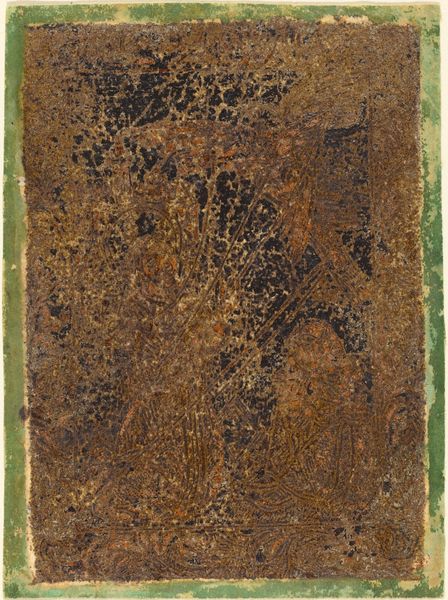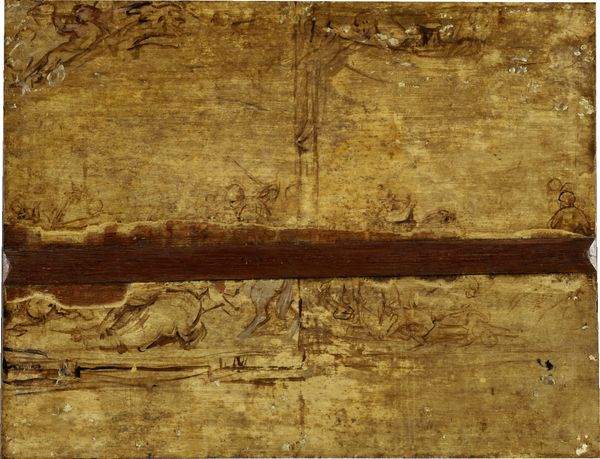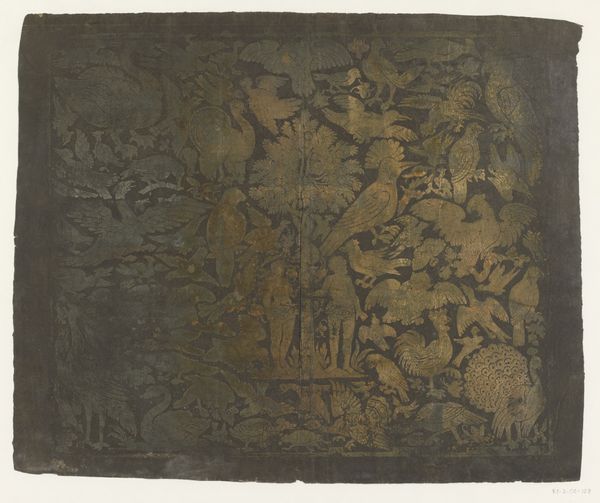
drawing, mixed-media, print, etching, paper, ink
#
drawing
#
mixed-media
#
water colours
# print
#
impressionism
#
etching
#
landscape
#
paper
#
ink
#
line
#
mixed medium
Dimensions: 216 (right); 217 (left) × 309 mm
Copyright: Public Domain
Rodolphe Bresdin created "The Great Battle," using etching, a printmaking process where lines are incised into a metal plate to hold the applied ink. The impression exhibits a dense network of lines, evoking chaos and the sense of frenetic energy of conflict. The material qualities of the etching process are significant here. Bresdin scratched lines into a coated metal plate with a sharp tool, exposing the metal underneath, which then bit into it using acid. The depth and thickness of these lines influenced the amount of ink they hold, directly affecting the contrast and texture of the final print. This technique allows for fine detail and intricate patterns, seen in the massed bodies of soldiers, and strange, unidentifiable landscape features. The repetitive, labor-intensive process of etching echoes the relentless, grinding nature of war itself. Bresdin highlights the medium’s capacity for detailed, almost obsessive mark-making. This resonates with the historical context of industrialization and mass production, where individual labor contributes to a larger, often impersonal, outcome. Ultimately, the image prompts us to reconsider the relationship between artistic craft and the broader socio-political landscape.
Comments
No comments
Be the first to comment and join the conversation on the ultimate creative platform.
